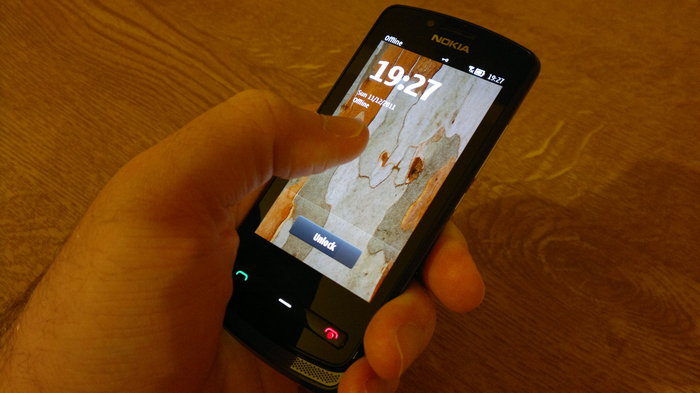Published by David Gilson at 13:07 UTC, December 13th 2011
Summary:
The Nokia E7 and 700 - there couldn't be two Symbian devices that are more different. The E7 is the enterprise-focussed behemoth, and the 700 is the ultra slim device made to discreetly fit into any pocket. Surprisingly, there is very little that you can do with one device that you can't do with the other. Thanks to Belle's updated user interface, Symbian's best in class power management and its general functionality, there is plenty to lament about Nokia's decision to sunset the platform.
Obviously, the E7-00 and 700 look and feel completely different. Therefore individual taste will determine which device is looked at in shops. Probably, a preference for one form factor will preclude you even looking at the other. Also, some consumers may have certain expectations of a device's capabilities based on its form factor. For example, I would expect a moderately informed consumer to assume that the E7 has many more business orientated features than the 700 - in reality the two devices are not quite so distinct.

Beauty and the beast - The Nokia E7 and 700
When I reviewed the Nokia E7, I found that there was very little in its software suite to differentiate it from other devices, e.g. the N8, C7, etc. With Symbian^3, Nokia brought together the best aspects of each series of devices, and so (most) enterprise features were inherited across the whole device range - regardless of the model name. Also note the N, E, X and C series designations have now been dispensed with for smartphones. Therefore, the Nokia 700 has Nokia Messaging with support for major email providers and full Mail for Exchange synchronisation.
I found the E7 had far less security features than I expected. Its only security solution was the third party F-Secure suite - which offered limited functionality without purchasing the full version. Hence, neither device has any natively integrated security features; e.g. drive encryption or VPN support. While F-Secure is available on the Nokia Store for other devices like the N8, it isn't available for the 700 - the only alternative is Kapersky Mobile Security.
Other facilities you might need in a corporate environment are SIP internet telephony and Intranet support. This is where the E7 stands out. While all Symbian^3 generation devices support SIP, only the Eseries devices support Intranets.

The E7's and 700's keyboards
Both devices share identical core applications, including Contacts, Calendar, Music player, Web, Messaging, Photos and Photo Editor, Videos and Video Editor, Maps, Calculator, Adobe Reader, etc. The only difference is Quickoffice - the QWERTY enabled E7, appropriately, has editing mode enabled; whereas the 700 can only view documents unless you pay for the upgrade.
I find it debatable how much office editing is really done on mobile devices. The E7's physical keyboard is slower but more accurate to use than the virtual landscape keyboard; likewise for the 700's smaller 3.2" screen. Therefore, typing speeds may, on average, be almost equal on both devices.
Next, let's quantify the physical differences:

Can the E7 eat the 700 for breakfast?
Clearly, both form factors are worlds apart, and so personal preference comes into play. While the E7 has specialised enterprise features not found on the 700, that is not to say that the 700 is without business friendly features. Mail for Exchange, SIP calling, PDF and Office document reading are all available on this most svelte of Symbian devices. By purchasing the Quickoffice upgrade, the 700 even has ability to tweak documents.

The Nokia 700 - the ultimate compact office tool?
The E7 is the perfect desktop Symbian companion, thanks to its hinged display, and so would provide a useful second screen to those who work at a desk. Meanwhile, the 700's form factor make it particularly useful to workers on the move who need quick access to email and calendaring.

Is the Nokia E7 too much of a handful?
Finally, consider the cost of each. The best retail prices I have found are at Handtec where the E7 costs £335.39, and the 700 is priced at £227.99. If you prefer to buy second hand, the E7 is currently selling on eBay for between £175 and £200, while the 700 is going for between £100 and £190. Therefore, if you don't need the E7's generous proportions and niche enterprise features, the 700 could make for a cheaper and discreet alternative.
The point of this extremely strained comparison is that Symbian is highly functional in many scenarios and any form factor. Just because an end of life date has been set for the platform, it does not mean that you cannot continue to make as much use of it as you always have.
David Gilson - 13 December 2011.
blog comments powered by Disqus
No hay comentarios:
Publicar un comentario